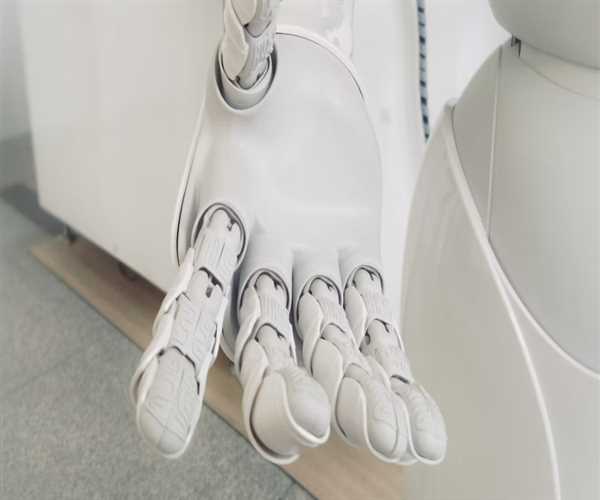Artificial Intelligence (AI) has rapidly become a transformative force in various industries, including art, music, and design. AI's ability to process vast amounts of data, recognize patterns, and generate creative outputs is revolutionizing the way artists, musicians, and designers approach their work. In this blog, we will explore the ways in which AI is impacting art, music, and design, and how it is pushing the boundaries of human creativity and expression.
AI in Art: From Assistance to Co-Creation
AI is changing the landscape of art by offering artists new tools and techniques for creative expression. AI-powered tools, like deep learning algorithms, can analyze vast art datasets and learn the style and characteristics of famous artists. This knowledge can then be used to assist artists in generating art that emulates specific styles, making the creative process more efficient and versatile.
Moreover, AI is increasingly being used as a co-creator in the artistic process. Artists are embracing AI-powered generative adversarial networks (GANs) to create entirely new and unique artworks. GANs work by pitting two neural networks against each other, where one generates art, and the other evaluates its authenticity. This process results in the creation of novel and surreal artworks that often transcend human imagination.
AI in Music: From Composition to Performance
AI is reshaping the world of music by expanding the boundaries of composition and performance. AI algorithms can analyze vast collections of musical scores, learn the patterns and structures of different music genres, and then generate original compositions. This capability is particularly useful in aiding composers and musicians in experimenting with new musical ideas and exploring uncharted territories of sound.
Moreover, AI is also playing a role in music performance. AI-powered virtual musicians, such as virtual singers and instrumentalists, are becoming increasingly popular. These virtual musicians can sing and play instruments with astounding realism, offering musicians new opportunities for collaboration and experimentation.
AI in Design: From Efficiency to Innovation
In the field of design, AI is streamlining the creative process and enhancing designers' efficiency. AI-powered design tools can quickly generate multiple design options, saving designers valuable time and effort. For example, AI can assist graphic designers in creating logos, branding materials, and layouts by offering various design options based on predefined preferences.
AI is also revolutionizing product design by using generative design algorithms. These algorithms can generate and evaluate numerous design options based on input parameters and performance requirements, resulting in innovative and optimized designs.
AI and Human-AI Collaboration
While AI is undoubtedly making significant strides in art, music, and design, many experts emphasize the importance of human-AI collaboration. The creative process remains inherently human, and AI should be seen as an enabler rather than a replacement for human creativity.
Artists, musicians, and designers are finding innovative ways to collaborate with AI, utilizing its capabilities to enhance their creative expression. The relationship between human creators and AI is symbiotic, with AI augmenting human creativity and expanding artistic possibilities.
Ethical Considerations in AI-Generated Art
As AI becomes more involved in the creative process, ethical considerations come into play. One significant concern is the issue of intellectual property and ownership. AI-generated art blurs the lines of authorship, as AI systems are trained on existing works of art, making it challenging to determine the originality and ownership of AI-generated creations.
Additionally, AI-generated art raises questions about cultural appropriation and the responsible use of AI. Ensuring that AI-generated art respects cultural and societal norms and does not perpetuate harmful stereotypes is crucial.
The Role of Creativity and Emotional Connection
While AI can generate impressive art, music, and designs, the essence of human creativity and emotional connection cannot be replicated. Art, music, and design are deeply connected to human emotions, experiences, and perspectives. The human touch in creative expression brings authenticity, uniqueness, and emotional depth that AI-generated works may lack.
The Future of AI in Art, Music, and Design
The future of AI in art, music, and design is promising. As AI technology continues to advance, we can expect more sophisticated AI tools and algorithms that further augment human creativity and artistic expression. AI can be a powerful ally in democratizing creative processes, making art, music, and design more accessible to a broader range of people.
However, it is essential to strike a balance between AI-driven automation and preserving the human touch in creative endeavors. Human artists, musicians, and designers will remain at the heart of creative expression, leveraging AI as a tool to explore new horizons and push the boundaries of their crafts.
Conclusion
Artificial Intelligence is transforming art, music, and design in unprecedented ways. From assisting artists and musicians to co-creating with them, AI is revolutionizing the creative process and expanding artistic possibilities. AI-generated art, music, and design open new avenues for experimentation and innovation.
However, ethical considerations about intellectual property, cultural appropriation, and the responsible use of AI must be addressed as AI's role in the creative process grows. Ultimately, the future lies in embracing AI as an enabler of human creativity, fostering collaboration between human creators and AI systems to unlock new dimensions of art, music, and design. The synergy between human creativity and AI-driven innovation has the potential to shape a vibrant and inspiring creative landscape in the years to come.




Leave Comment